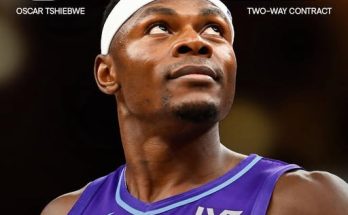For years, fans and analysts have treated the NFL Draft as a game of darts: a high-stakes exercise in guesswork, projection, and calculated risk. And for much of the last two decades, the Chicago Bears have been throwing more wildly than accurately. But lately, it seems like the dart is finally hitting the bull’s-eye.
The 2024 NFL Draft may go down as the moment when the Bears rewrote their legacy. A franchise once defined by missed opportunities, questionable quarterback selections, and first-round gambles that failed to pan out is now beginning to resemble one of the league’s most strategic and deliberate front offices. The arrow has been reset. The trajectory has changed. And the man standing at the center of the board is general manager Ryan Poles.
Poles entered his role in 2022 with a monumental challenge: restore a once-proud franchise to relevance, build around an unstable quarterback situation, and turn one of the NFL’s most inconsistent rosters into a sustainable contender. Fast forward to the present, and the moves he’s made—especially in the draft—are painting a much clearer picture of what success looks like in the Windy City.
The boldest and perhaps most important dart thrown landed squarely on Caleb Williams. The Bears used their No. 1 overall pick to select the Heisman-winning quarterback from USC, and with that move, declared the beginning of a new era. Williams, long considered a generational talent, gives the franchise something it hasn’t had in decades: a legitimate, homegrown franchise quarterback with elite tools, poise, and charisma.
But it wasn’t just the selection of Williams that turned heads—it was the manner in which the Bears set themselves up to do it. The groundwork was laid a year earlier, when Poles made a blockbuster trade with the Carolina Panthers, sending the 2023 No. 1 pick in exchange for wide receiver DJ Moore, a haul of picks, and the Panthers’ 2024 first-rounder. That trade not only brought in a legitimate No. 1 wideout but also allowed the Bears to control the draft board a full year in advance.
In a league where front offices often scramble at the last second, Poles made sure Chicago was two steps ahead. That’s the kind of vision that transforms franchises.
Even more impressive is how Poles has surrounded Williams with the kind of talent that ensures he won’t be left to fail on his own. With the No. 9 overall pick in the 2024 draft, the Bears added wide receiver Rome Odunze, a powerful and polished pass-catcher from Washington. Odunze joins a suddenly loaded wide receiver room that includes Moore and the recently-acquired Keenan Allen. In one offseason, the Bears have transformed their passing attack from one of the league’s least threatening to arguably its most intriguing.
This is not the same Bears team that drafted Mitch Trubisky over Patrick Mahomes and Deshaun Watson in 2017. This is not the same front office that traded away future first-round picks for half-baked attempts to solve the quarterback problem. This is a new era defined by thoughtful decision-making, elite scouting, and a commitment to sustainable success.
Take a step back, and the entire 2024 draft represents a masterclass in roster construction. Beyond Williams and Odunze, the Bears found value in later rounds by targeting players who fill immediate needs without sacrificing long-term upside. Their third-round selection of offensive tackle Kiran Amegadjie out of Yale is already drawing praise for its blend of athleticism and intelligence. The Bears have long needed help on the offensive line, and Poles—himself a former lineman—clearly understands the importance of building from the trenches.
Even undrafted free agents are finding traction in Chicago, a testament to how well the front office is identifying overlooked talent. In today’s NFL, championship rosters aren’t built in the first round alone. They’re forged through depth, development, and patience. And that’s where Poles is thriving.
Perhaps most importantly, Poles and head coach Matt Eberflus are finally in lockstep. The alignment between the front office and coaching staff hasn’t been this clear since the Lovie Smith era. Eberflus, a defense-minded coach, is finally getting the personnel to execute his vision. Last season saw the emergence of young defensive studs like Tyrique Stevenson and Gervon Dexter Sr., both of whom were key picks in the 2023 draft. The trade deadline addition of Montez Sweat, combined with this year’s fresh draft haul, gives Chicago a well-rounded roster on both sides of the ball.
But draft success isn’t just about hitting home runs in the first round. It’s about building a cohesive identity over time. In that regard, Poles is proving to be the most competent general manager the franchise has had in years. He’s balancing short-term improvements with long-term development. He’s not swinging wildly—he’s aiming carefully, adjusting his stance, and delivering results.
And it’s paying off. The national perception of the Bears is changing. No longer the laughingstock of NFL Twitter or the forgotten team in the NFC North, the Bears are now being discussed as a sleeper playoff contender. Analysts are praising their draft-day savvy. Former players are lining up to endorse the new direction. Fans—long-suffering, yet loyal—are believing again.
Of course, none of this guarantees success. Williams still has to prove it on the field. The offensive line has to gel. The defense must take another step forward. But for once, the foundation feels real. The excitement isn’t just hype—it’s rooted in tangible progress and smart decision-making.
The numbers back it up too. Since Poles took over, the Bears have added 18 draft picks, and a remarkable percentage of them have already seen meaningful playing time. That’s a stark contrast to earlier eras, when top picks often sat on the bench or flamed out by year two. Development is no longer an afterthought in Chicago—it’s a priority.
Poles is also setting an example for other general managers across the league. He’s showing how to rebuild without burning everything down. He’s proving that patience and precision can work better than desperation and flash. The Bears aren’t chasing headlines anymore—they’re chasing wins.
Another key factor: cultural transformation. The locker room is healthier, tighter, and more focused. Leaders like Tremaine Edmunds, DJ Moore, and T.J. Edwards are setting the tone, while the rookies are buying into a system that rewards effort and accountability. That kind of buy-in is hard to manufacture—but it’s essential to sustaining long-term success.
In many ways, the Bears are returning to their roots. Chicago has always been a blue-collar football town, and the new identity being forged aligns with that ethos. Tough, physical, smart, and driven. The swagger is slowly returning, not as empty bravado, but as earned confidence.
There’s also a sense of redemption in the air. Bears fans have been through it all—from the double-doink to draft-day disasters to endless quarterback questions. But now, for the first time in a long time, it feels like the franchise is genuinely on the rise. Not because of luck, or a fluke season, but because the right people are in place making the right calls.
And perhaps the best part is that the Bears are doing it their way. They’re not trying to mimic Kansas City or San Francisco. They’re carving out their own blueprint—one that reflects the city they represent. Grit. Heart. Vision.
Ryan Poles isn’t throwing darts in the dark. He’s aiming for the bull’s-eye—and more often than not, he’s hitting it. The draft is no longer a gamble in Chicago. It’s a weapon. A pathway to greatness.
Time will ultimately be the judge, but for now, the arrow is sticking right where it should be. And for a franchise that’s spent too long missing the mark, that’s a win worth celebrating.



